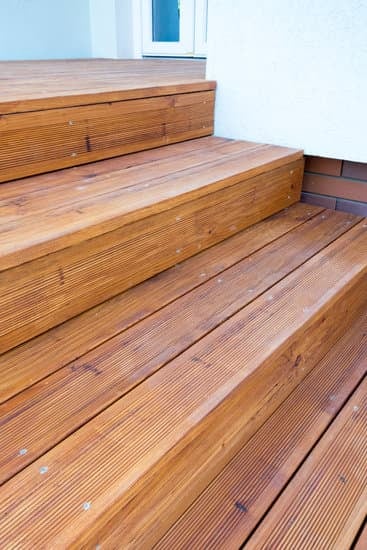In today’s digital age, having good cellphone reception at home is essential for staying connected with friends, family, and colleagues. The frustration of dropped calls or slow data speeds can be a common experience for many individuals. So, how do you improve cellphone reception at home to ensure seamless communication?
Various factors can affect cellphone reception, including your location, distance from cell towers, building materials in your home, and interference from other electronic devices. Understanding these factors can help you assess the quality of your current cellphone reception. Signal strength, dropped calls, and sluggish data speeds are indicators that your reception may need improvement.
Choosing the right cell phone carrier is also crucial in ensuring good reception at home. Researching coverage maps and comparing plans and services can help you find a carrier that offers reliable connectivity in your area.
For those looking to take matters into their own hands, there are various ways to enhance cellphone reception both indoors and outdoors using signal boosters, external antennas, and other techniques. By following some simple DIY tips and utilizing available resources, you can significantly improve your cellphone reception at home.
Factors Affecting Cellphone Reception
When it comes to improving cellphone reception at home, understanding the factors that can affect your signal strength is crucial. There are several key elements that can impact the quality of your cell phone connection, including your location, distance from cell towers, building materials, and interference from other electronic devices. By being aware of these factors, you can take proactive steps to enhance your cellphone reception and enjoy reliable connectivity.
Location Matters
The geographical location of your home plays a significant role in determining the strength of your cellphone signal. If you live in a rural area or in a location with many hills or obstacles, you may experience weaker reception compared to those living in urban areas with more cell towers nearby. Understanding where your nearest cell tower is located can help you better position yourself for optimal signal coverage.
Distance From Cell Towers
The proximity of your home to the nearest cell tower also impacts your cellphone reception. The farther away you are from a tower, the weaker the signal strength may be. If possible, consider choosing a wireless carrier that has more cell towers in your area to ensure better coverage. Additionally, positioning yourself closer to a window or outside when making calls can help improve signal quality.
Building Materials and Interference
The type of building materials used in your home can also affect cellphone reception. Thick walls made of concrete or metal can obstruct signals, resulting in poor connectivity indoors. Additionally, interference from other electronic devices such as microwaves, cordless phones, and Wi-Fi routers can disrupt your cellphone signal. To improve reception, consider using a signal booster or wifi calling feature and minimizing electronic interference within your home environment.
Assessing Your Current Cellphone Reception
When it comes to using our cell phones at home, experiencing poor reception can be frustrating. Understanding the factors that affect cellphone reception is crucial in improving the quality of service we receive. Location, distance from cell towers, building materials, and interference are all key factors that can impact the signal strength of your cellphone.
Signal Strength
One of the first steps in assessing your current cellphone reception is to check the signal strength on your device. Most smartphones have a built-in feature that allows you to see how many bars of signal you are receiving. Ideally, you want a strong signal with full bars to ensure clear calls and fast data speeds. If you notice consistently low signal strength in certain areas of your home, it may be time to consider ways to improve it.
Dropped Calls
Another common issue related to poor cellphone reception is dropped calls. If you find yourself frequently experiencing dropped calls while using your phone at home, this could be a sign of weak signal strength. Dropped calls can be frustrating and disruptive, especially when trying to have an important conversation. Assessing where these dropped calls occur most frequently can help pinpoint areas in your home that need improvement.
Slow Data Speeds
Slow data speeds are also a common indicator of poor cellphone reception at home. Whether you’re trying to browse the internet, stream videos, or use social media apps, slow data speeds can hinder your overall experience.
If you find that loading pages takes longer than usual or videos constantly buffer while using your phone on Wi-Fi or cellular data, it could be due to inadequate signal strength. Understanding these aspects of your current cellphone reception is vital in finding solutions to improve it for a better user experience.
Choosing the Right Cell Phone Carrier
When it comes to ensuring good cellphone reception at home, one crucial aspect to consider is choosing the right cell phone carrier. Different carriers have varying coverage areas and service quality, so it’s important to research coverage maps and compare plans and services before making a decision. Here are some steps to help you choose the best cell phone carrier for improved reception at home:
- Research Coverage Maps: Start by looking at coverage maps provided by different carriers to see which ones offer strong signal strength in your area. Some carriers may have better coverage in urban areas while others excel in rural regions.
- Comparing Plans: Once you’ve identified carriers with good coverage in your location, compare their plans to see which one offers the best value for your specific needs. Consider factors such as data limits, contract lengths, and additional features like international calling.
- Assessing Services: In addition to coverage and plan options, take into account the overall customer service reputation of each carrier. Reliable customer support can be crucial when troubleshooting any reception issues that may arise.
By taking the time to research coverage maps, compare plans, and assess services offered by different cell phone carriers, you can make an informed decision that will ultimately improve your cellphone reception at home. Remember that what works best for one person may not necessarily work for another, so consider your specific needs and location when choosing a carrier for optimal reception.
Improving Cellphone Reception Indoors
Having reliable cellphone reception at home is crucial for staying connected, whether it’s for work, emergencies, or simply keeping in touch with loved ones. Poor reception can lead to dropped calls, slow data speeds, and frustration. Understanding the factors that affect cellphone reception, such as location, distance from cell towers, building materials, and interference, is essential in finding ways to improve it.
There are several ways to enhance cellphone reception indoors and ensure strong signals throughout your home. Here are some tips and tricks to help boost your cellphone reception:
- Use a signal booster: A signal booster works by amplifying weak signals to improve call quality and data speeds. It consists of an outdoor antenna to capture the existing signal and an indoor amplifier to boost it throughout your home.
- Utilize Wi-Fi calling: If you have a reliable Wi-Fi connection at home, enabling Wi-Fi calling on your smartphone can help improve call quality and eliminate potential issues with poor cellular reception.
- Adjust settings: Sometimes simple tweaks to your phone settings can make a big difference in improving cellphone reception. For example, turning on airplane mode for a few seconds before disabling it can help refresh your connection.
By implementing these strategies and making use of tools like signal boosters and Wi-Fi calling, you can significantly enhance your cellphone reception at home. Don’t let poor signal strength disrupt your communication – explore these options to stay connected seamlessly.
Enhancing Cellphone Reception Outdoors
When looking to enhance cellphone reception outdoors, there are several strategies you can implement to improve your connectivity. One effective method is by utilizing external antennas, which can help boost your signal strength by capturing signals more effectively.
These antennas can be mounted on the exterior of your home or property to maximize reception from nearby cell towers. By investing in a high-quality external antenna that is compatible with your specific carrier, you can significantly improve the reliability and clarity of your calls.
Another option to consider for enhancing cellphone reception outdoors is using signal amplifiers. These devices work by boosting weak signals and amplifying them for better coverage. Signal amplifiers come in various models and configurations, so it’s essential to choose one that suits your needs and environment. By strategically placing a signal amplifier in an area with poor reception, you can strengthen the signal quality and reduce dropped calls or slow data speeds.
In addition to external antennas and signal amplifiers, one crucial aspect to improving cellphone reception outdoors is avoiding obstructions. Trees, buildings, and other structures can interfere with the signal transmission between your phone and the nearest cell tower.
By positioning yourself in an open area with a clear line of sight to the tower, you can minimize obstacles that may weaken your signal strength. It’s important to be mindful of your surroundings and make adjustments as needed to ensure optimal reception quality.
| Enhancing Techniques | Effectiveness |
|---|---|
| External Antennas | Helps capture signals more effectively from nearby cell towers |
| Signal Amplifiers | Boost weak signals for better coverage |
| Avoiding Obstructions | Ensure clear line of sight to nearest cell tower for optimal reception quality |
DIY Tips for Boosting Cellphone Reception
Improving cellphone reception at home is crucial for staying connected in today’s digital age. Poor signal strength can lead to dropped calls, slow data speeds, and overall frustration. So, how do you improve cellphone reception at home? There are several do-it-yourself tips that can help boost your signal without having to call in a professional.
One of the simplest ways to improve cellphone reception is by repositioning your phone. Sometimes, something as simple as moving closer to a window or towards an open space can make a significant difference in signal strength. Additionally, updating your phone’s software regularly can also help improve reception by optimizing its performance and connectivity capabilities.
Another DIY tip for boosting cellphone reception at home is clearing clutter from around your device. Physical obstructions such as furniture, walls, and other electronic devices can interfere with the signal reaching your phone. By keeping your surroundings clear of these obstacles, you can enhance your phone’s ability to receive a better signal.
In addition to repositioning your phone, updating software, and clearing clutter, there are other simple steps you can take to improve cellphone reception at home. Some apps are available that allow you to check the signal strength in different areas of your house, helping you identify where the best reception is. Community forums are also a great resource for advice on improving cell reception, as other users may have encountered similar issues and found solutions that work well.
Additional Resources and Tips
In conclusion, improving cellphone reception at home is crucial for staying connected and ensuring smooth communication. By understanding the factors that affect reception, assessing your current situation, and choosing the right cell phone carrier, you can take the first steps towards enhancing your signal strength.
There are various techniques to improve cellphone reception both indoors and outdoors. From using signal boosters and Wi-Fi calling indoors to utilizing external antennas and signal amplifiers outdoors, there are practical solutions to enhance your connectivity. Additionally, DIY tips such as repositioning your phone, updating software, and minimizing obstructions can also make a difference in improving reception.
For those seeking further assistance in optimizing their cellphone reception, there are additional resources available. Signal strength apps can help you monitor your connection quality, community forums provide valuable advice from experienced users, and professional installation options offer a more hands-on approach to improving your reception. By exploring these resources and implementing the tips provided in this article, you can significantly improve your cellphone reception at home for better communication experiences.
Frequently Asked Questions
How Can I Boost My Cell Phone Signal in My House?
Boosting your cell phone signal in your house can be done by moving closer to a window or even going outside. You can also try upgrading your router, using a signal booster, or installing a femtocell device to improve reception.
How Can I Improve My Cell Phone Signal Strength?
Improving your cell phone signal strength involves simple steps like restarting your phone, updating its software, and removing any obstacles that may be blocking the signal. You can also try switching to a different network carrier or investing in a high-gain antenna.
Do Homemade Cell Phone Signal Boosters Really Work?
Homemade cell phone signal boosters may not always be effective as professionally made ones since they lack the sophisticated technology needed for significant signal enhancement. It is recommended to use certified signal boosters from reputable companies for reliable results.

I’m thrilled to have you here as a part of the Remodeling Top community. This is where my journey as an architect and remodeling enthusiast intersects with your passion for transforming houses into dream homes.





